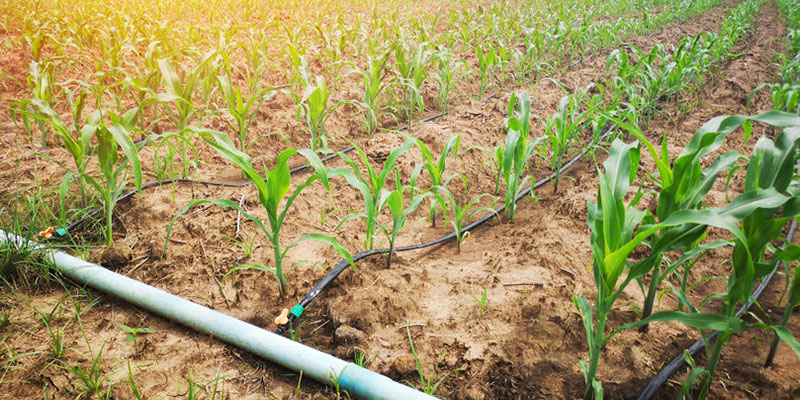One significant way to reduce a product’s virtual water is by recycling process water to use for crop irrigation.
Even goods that contain no actual water can carry a great deal of virtual water
“Virtual water” is a concept in use since the 1990s that assumes all of the water required to produce a good remains embedded within the good as it moves along the value chain.
With the concept of virtual water, we can say a bowl of completely dry cereal contains all the water that was needed to grow and harvest the crops, clean the grain, rinse away unwanted material, process the final product, and even create the paper used for the box.
Used interchangeably with “indirect water,” the concept of virtual water allows us to quantify virtual water transfers when products ship from one region to another. The Water Footprint Network explained:
As food and other products are traded internationally, their water footprint follows them in the form of virtual water. This allows us to link the water footprint of production to the water footprint of consumption, wherever they occur.
Virtual water is a key concept in the age of climate change, but as water scarcity and demand grow, Fluence technologies are shrinking water footprints and lowering the virtual water content of a number of products.
Virtual Water and Water Footprints
A “water footprint” is a concept related to virtual water because both concepts relate to water requirements, but there are key differences. Water footprint calculation can analyze the sustainability of a product in detail, including its use of blue, green, and grey water. The concept of virtual water, however, is used to track virtual water trade as the benefits of water movement along the value chain.
Keeping Virtual Water Content Low
One of the most effective ways to cut virtual water transfers is water reuse. Instead of discharging wastewater into the environment or piping it to municipal treatment facilities, industrial operations significantly benefit from treating and reusing their own wastewater for process water, boiler blowdown, HVAC makeup, cleaning, dust reduction, toilet flushing, and irrigation. Even energy has virtual water content that can be reduced by reuse.
For instance, an oilfield can desalinate and further treat produced water for reuse, and solar plants can reuse brackish blowdown water.
Food and beverage companies also have virtual water content that can be reduced through reuse. For example, a seafood processing plant in Ecuador with a Fluence wastewater treatment system was able to produce 240 m3/d of demineralized water for reuse as process and boiler water, with 60 m3/d of excess water left over for irrigation. In Buenos Aires, Fluence helped one of the largest bottling companies reuse its water within the plant with a tailor-made, membrane-based treatment system.
The list of applications goes on, and in each case, lowering water use means less virtual water embedded in the products and services the operations produce. And less virtual water leaving an area means less stress on vital local relationships that depend on wise stewardship of shared water resources.
Contact Fluence and tell our experts about your operation. With our Water Management Services and BOO and BOOT financing structures, Fluence can get your operation the infrastructure it needs with no upfront investment, and even monitor and operate it for you. We have a catalog of specialized products and more than 30 years of experience.

